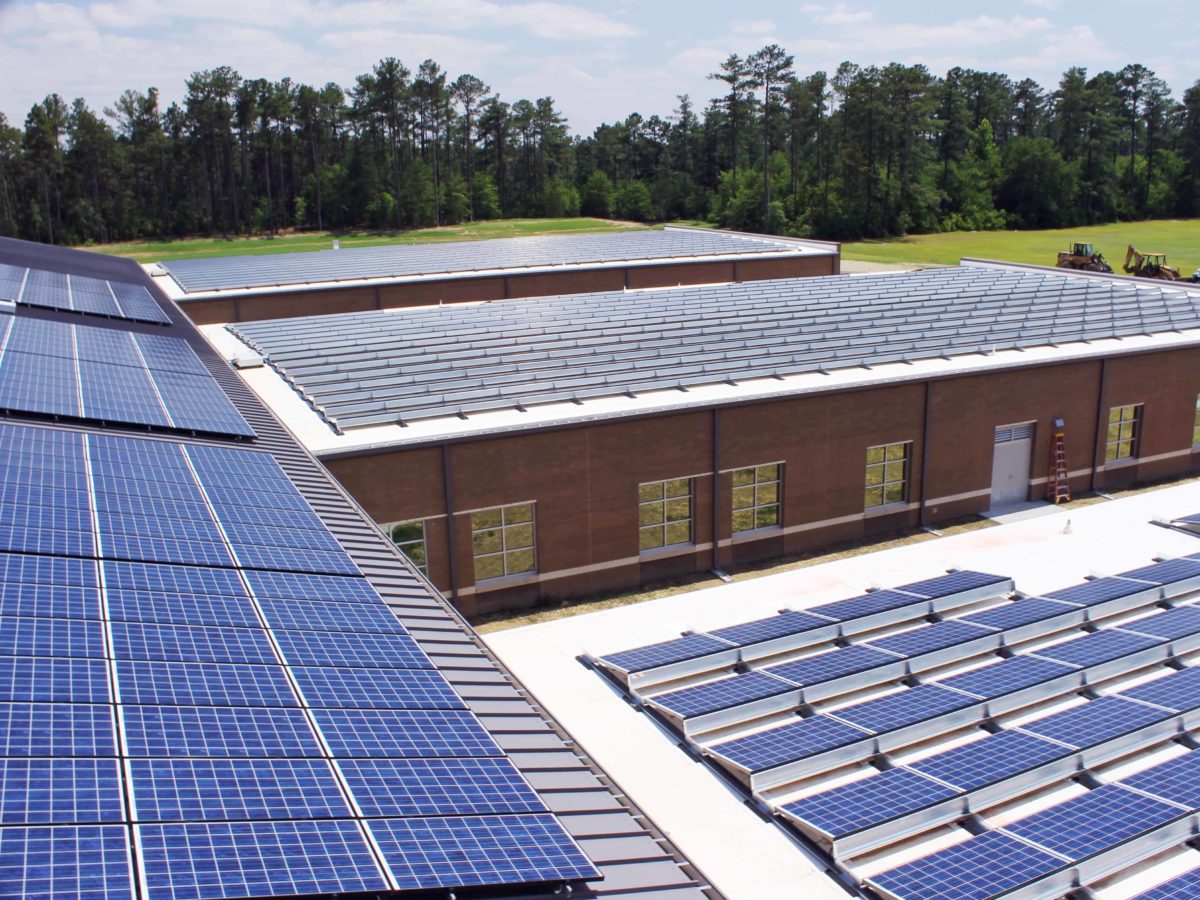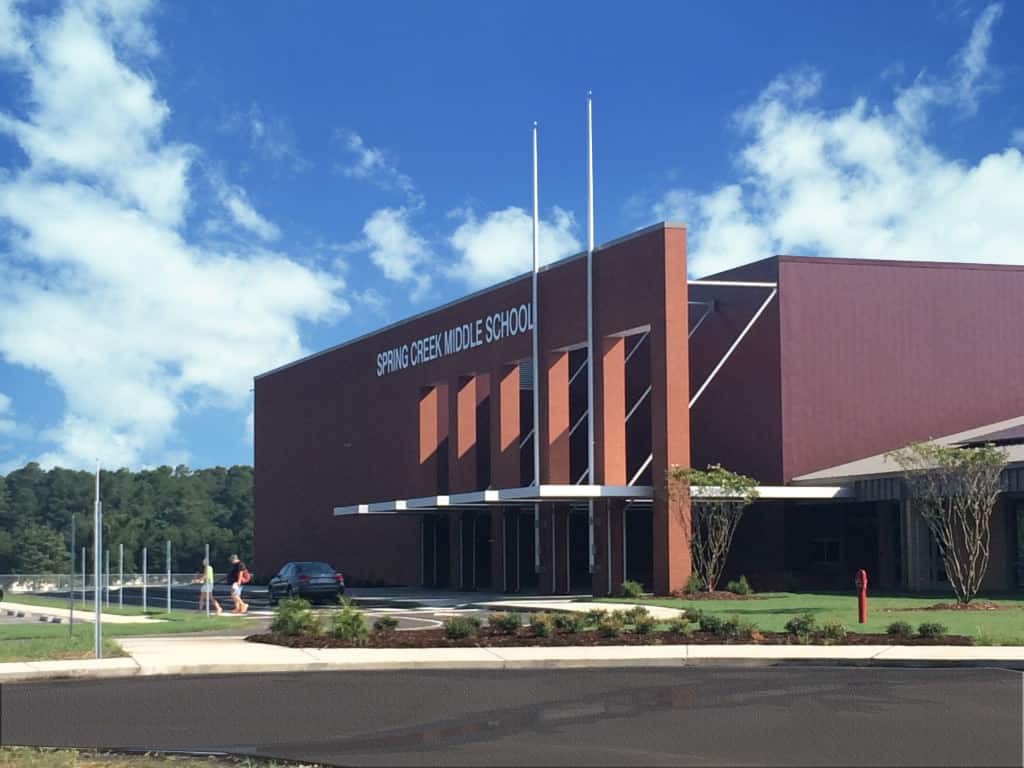

Operating and maintenance costs of educational facilities are constantly on the rise. Finding creative ways to reduce these costs are critical to preserving funds for education rather than facilities. Institutions throughout the United States struggle with balancing operations and maintenance costs, staff salaries, and so much more.
There are many challenges for institutions, large and small, to find the right solution that meets their needs. One way to add dollars back into the district’s operating budget is to build energy-efficient, high-performance school facilities.
These schools dramatically decrease or even eliminate electrical bills for the school and, when solar panels are added, they can even create a revenue stream for the district.
Several small districts throughout North Carolina are building energy-positive school facilities and reaping the cost-savings. So, why are smaller districts doing so while larger districts are maintaining the status quo? Change is hard for larger districts with larger-scale processes and strict capital improvement plans.
Smaller districts are often in a more desperate circumstance requiring bold, out-of-the box innovative ideas to move forward. Larger districts struggle with overcrowded facilities and smaller districts often witness declining enrollments. Aging school facilities and constant building maintenance are overwhelming in both situations. Energy efficient design that reduces the total cost of ownership is no longer an idea to consider, its time as has come and to do any less would be irresponsible.
Below are a few examples of projects where we were able to foster an integrated design approach with all stakeholders to maximize energy efficiency, construction cost, and building program.
Sandy Grove Middle School – Hoke County Schools
Hoke County is one of North Carolina’s high-growth, low-wealth counties. This combination of tremendous growth with low wealth led the Hoke County Commissioners and Hoke County Schools to take a bold, proactive approach to their otherwise desperate situation. Sandy Grove Middle School is the nation’s first energy-positive, leased public school–-delivered through a public-private partnership. By delivering this project through public-private partnership, the project and partners took advantage of a variety of tax credits, private sector financing, and innovative design and construction techniques, to offset the infrastructure costs for the renewable energy features, saving the county significant amounts of money over the life of the building. Sandy Grove Middle School will save approximately $35 million over 40 years.


Grantham & Spring Creek Middle Schools – Wayne County Public Schools
Wayne County Schools desperately needed two additional middle schools in their growing district. However, limited funding made their desire to build top-caliber educational facilities impossible. Exhausting the traditional options on how to achieve these facilities, the school district, along with the Wayne County Commissioners and additional stakeholders, came to the conclusion that designing and building two energy-positive educational facilities would save the district money over the life of the buildings without a significant increase in up-front cost. Innovative features in each middle school include large photovoltaic and geothermal heating and cooling systems, LED lighting, dynamic air cleaning system, spray foam insulation, advanced building automation systems, and solar panels. The schools will be energy-positive facilities, designed to return more energy to the grid than they consume. They will save the taxpayers $30-35 million.
Denmark-Olar School District – Denmark, SC
The Denmark-Olar School District operates out of three existing schools and a central office facility. Enrollment has dropped dramatically in recent years and therefore their facilities are oversized and underutilized. Revenues have dropped due to the declining enrollment and deferred maintenance is overwhelming. The school district hired Firstfloor to develop a new PK-12 facility that also houses the central office. The new building will generate more electricity than it consumes eliminating more than $30 million in electrical bills and the staff reduction will save in excess of $1,000,000 annually. The new $50 million facility will be primarily paid for with savings from the consolidation.






